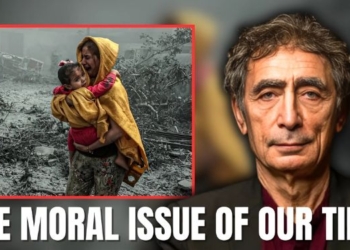
When I was in my late 20s, I was living in Santa Barbara and wondering about the course of my life. I had a job that was interesting enough, but it came with a terrible boss who actively sabotaged my work. I’d been in a few serious relationships, but none of them panned out. I’d enjoyed working at a university, but hoped to use my science background more and, perhaps, tap into my creativity. I wanted something different, possibly even a new town. But I wasn’t sure exactly what I wanted or how to get there.
That’s when I came across a book called Creative Visualization, and, for some reason, it spoke to me. Though I thought the main premise of the book was bogus—that all you need to do is figure out what you want, and the universe will provide—I nonetheless found its goal-setting exercise extremely helpful. In it, the author tells readers to imagine their best possible lives, considering many different aspects of life, including relationships, work, leisure time, personal development, the condition of society, and more. Then, they should write about this perfect life, as if everything were just as they wanted it to be.
Doing this exercise at that time helped me a lot, by encouraging me to reflect on my values, deepest desires, and goals. And I believe that taking the time to imagine a better, more fulfilled future started me on the path to where I am now. For example, back then I envisioned myself being married to a loving man (check), having a job where I could help foster more compassion in others (check), speaking new languages (check), and playing more music (check).
Did these things magically appear in my life? No, they didn’t. But knowing what I wanted to be helped me set an intention to work toward them. No doubt, my subconscious kicked in, too, and I began to notice opportunities that presented themselves to me or to actively seek out the information I needed. Plus, having a direction to take based on my truest desires gave me the impetus to make hard choices that ultimately changed my life—like moving from Santa Barbara and forgiving my alcoholic father’s past abuse.
Since that time, I’ve done this exercise many times over the years, often with good results. Even so, it wasn’t until recently that I noticed there is research to support the practice. When you imagine your best possible self, suggests the research, you feel more optimistic and positive about life, which motivates you to apply yourself toward fulfilling goals. And being happier can increase your willingness to tackle social problems, too, meaning it can make a difference in the world, not just for you as an individual. It’s not just for one type of person, either; it has been tried with different populations to overall good effect.
I can’t promise it will work for you, too. But it might make a difference in how you feel about the future—and that could be a good thing to do going into the year 2022.
Here is what the “best possible self” practice involves, according to Greater Good in Action:
1. Take a moment to imagine your life in the future. Ask yourself, what is the best possible life you can imagine? Consider all of the relevant areas of your life, such as your career, academic work, relationships, hobbies, and health. Then, write continuously for about 15 minutes about what you imagine this best possible future to be.
2. If you’re tempted to think about the ways your life isn’t working well right now or about financial, time, or social barriers to being able to make your best life happen, let that all go for the purpose of the exercise. Instead, focus on imagining a brighter future in which you are your best self and circumstances change enough to make this happen.
3. Be specific and creative, letting yourself imagine as much detail as you can and being as imaginative as you want when it comes to your best life. The more creative and specific you are, the more engaged you will be in the exercise and the more you’ll get out of it.
Though not mentioned in Greater Good in Action, I’ve found it helpful to write about this best possible life as if it were already happening—meaning, I write in the present tense. So, for example, I don’t write, “I’d like to be able to write a book someday,” but “I’ve finished writing a book on the psychological benefits of being in nature.”
When you’re feeling stressed or depressed, it can be harder to do this practice—but the research suggests that it can still be beneficial. I last did the exercise in March, when I was feeling particularly down and worried. Things looked grim for some important people in my life and, generally, for people around the world. Yet taking the time to focus on a better, more fulfilling life ahead helped me stay focused on what mattered to me and where to put my energy.
Here are some of the things I wrote then:
I have let go of all resentment, anger, heartache, disappointment, or hopelessness and am resting instead in a place of deep, abiding love, clarity, and conviction.
I continue to write for Greater Good, because I love my work. I’m learning new things regularly and finding purpose in helping people to live happier, more meaningful lives.
I stretch my body, meditate, eat well, and take good care of myself so that I’m in good health. I’m hiking in nature almost every day, which helps me feel calm and connected to the natural world.
I’ve planted a vegetable garden in my backyard, and I’m enjoying spending more time at home.
I’m visiting foreign countries, fulfilling my dream of more travel, adventure, and language acquisition.
My relationships with friends and family are stronger and closer than ever.
As you can see, some of what I wrote just confirms the value in things I’m already doing—like hiking and finding meaning in my work. Other things were new and gave me ideas of how to change my life for the better.
While not everything I wrote about has come to pass, some of it has. Certainly, realizing that I’d like to have a garden-inspired me to put one in my backyard. (Truth be told, my garden didn’t do super well…but I learned some stuff that will help me do better next year, I hope.) I decided to learn a little Greek because I realized how much I love learning languages, plus I anticipated using it on a fall 2020 trip to Greece with my husband. Unfortunately, the trip to Greece had to be nixed because of COVID. We pivoted and went somewhere closer, fulfilling part of my dream, at least. Obviously, these were personal goals. Yours will no doubt be very different than mine.
As I always do when envisioning my best life, I also visualized a better state for our world. Here is part of what I wished for then—and still wish for today:
The world is a beautiful place, filled with loving people who care about each other. There are no more social divides, social justice prevails, we’ve halted climate change, and no one lives in poverty anymore.
The jury is still out on achieving those lofty ideals. However, I do think the first step to positive change is setting your intention and the optimism that creates. By at least imagining the best possible future, I know I can keep myself engaged in making it come to pass. For me, that currently means writing articles that inspire others, participating in social justice causes, and giving generously to charities I believe in.
Perhaps we all need to imagine our best possible life at the end of 2021. We might find that by doing that, we’ll have more optimism about 2022 and figure out how to make the world a better place—not just for ourselves, but for everyone.

















